Strange as it may seem, two of Italy’s best white wines are made with the lowly Müller-Thurgau grape variety.
But with all due respect, that way of thinking is, in many ways, an emblematic representation of one of the worst aspects of the world of wine. Specifically, the knee-jerk tendency to incessantly praise wines made with well-known or famous grapes (Chardonnay, Sauvignon Blanc, Merlot, Cabernet Sauvignon) that all too often are in fact average at best. The converse is also true: wines made with grapes of lesser repute are often evaluated unfairly, when not downright denigrated. Such is the fate of wines made with Müller-Thurgau, a grape variety that has its share of detractors, but that would benefit greatly from people knowing a little more about it, not to mention having them taste more of the better wines made with it. I guarantee you: when that happens, it’s an eye-opening experience, which is exactly what happens when people taste Manni Nossing’s truly outstanding Müller-Thurgau Sass Rigais wine from the beautiful Valle Isarco in Italy’s Alto Adige. Eyes open.
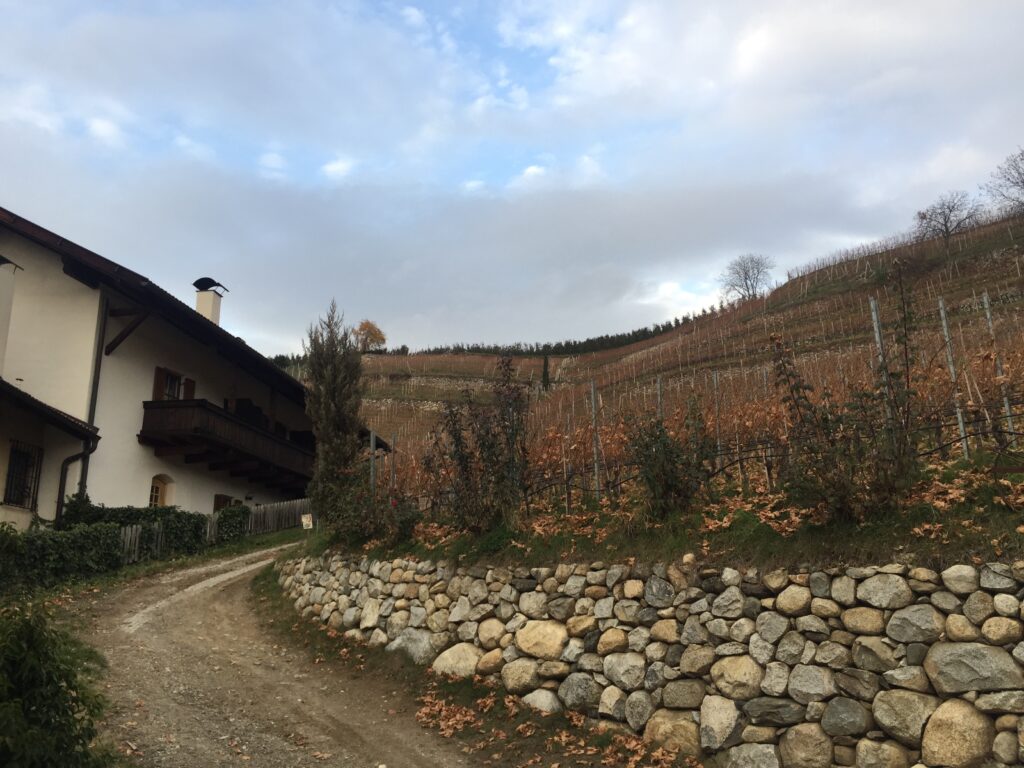
The Müller-Thurgau grape variety
Labelled in turn as boring, characterless, low in acidity and the more the merrier, few pundits have bothered to point out that the grape variety actually might have some potential if only it were properly taken care of. With Müller-Thurgau, that’s the problem in a nutshell: if you let the thing grow like a weed; if you plant it in fertile flatlands where even any self-respecting sunflower would refuse to put roots if only it could object; if you treat it like the cash-cow it was for so long… then just what exactly do you expect? Of course the resulting wine will be poor. Try mistreating Chardonnay like poor Müller-Thurgau has been over the years and just see the kind of neutral, boring and truly undrinkable crap you’ll produce. In fact, some of the absolutely worst, most neutral white wines I have ever tasted were made with Chardonnay (and in that sorry group I’m not even counting all the ridiculous and truly pathetic over-oaked bombs made a decade ago or so because such was the fashion then). Clearly, Müller-Thurgau wines are usually made by small estates and rarely represent their, or the region’s, most important wine in terms of of volumes and sales, and so very few professionals get much exposure to high quality Müller-Thurgau wines. In fact there are numerous outstanding examples of Müller-Thurgau wines to be had: Germany, Italy, Hungary, New Zealand, Luxembourg all make some very pretty wines with this variety, and they are not the only ones. Clearly, there are people out there capable of making something noteworthy with Müller-Thurgau. And so it follows that maybe, just maybe, it’s not the grape that’s the problem: what do you think?
Müller-Thurgau was born in 1882 when Hermann Müller, a Swiss botanist from the canton of Thurgau working at the prestigious Geisenheim viticultural university and successfully crossed Riesling with Madeleine Royale, a table grape. However, the grape was not initially dubbed so: the modern-day name of Müller-Thurgau became official only in 1913, when Müller was back in his native Switzerland, working in Wädenswil (locally often called Wädi or Wädischwil) at the experimental viticulture research station. Thi is because originally the newborn grape variety was thought to be a crossing of Riesling with Sylvaner, and this explains the litany of other names Müller-Thurgau has been called with over the decades, all of which harken back to those two grapes, erroneously thought to be its parents. For example, in Luxembourg and Slovenia the variety is still called Rivaner (an obvious acronym of Riesling and Sylvaner): so should you be vacationing in Luxembourg, and want to try one of the local, good, Müller-Thurgau wines, just make sure you search for Rivaner on wine lists and store shelves for that’s the name it goes by there.
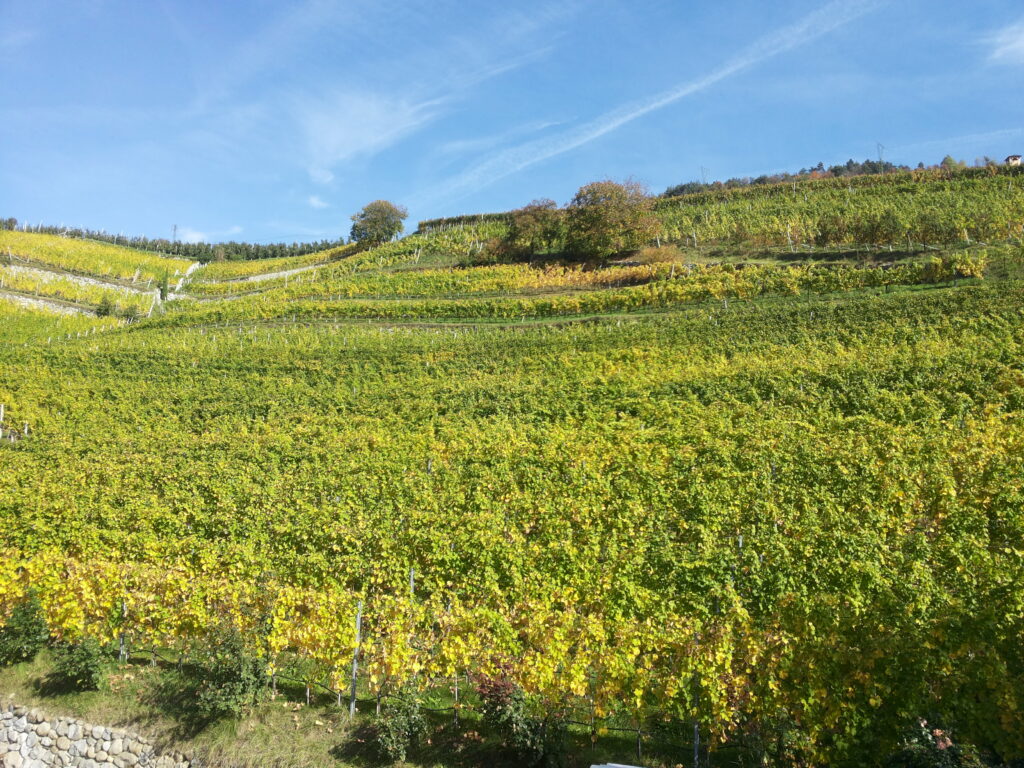
As it always is with crossings, the goal in creating Müller-Thurgau was to obtain a new “something” that would distill the best from both parents: in this case, it was hoped the progeny would have the nobility of Riesling and the proclivity of Sylvaner. And just as it always is too, Mother Nature knows best and ensures that the efforts of humanoid forms almost always fail, or are less successful than its own. So it is with Müller-Thurgau, that is neither as good as Riesling nor Sylvaner. But to be clear, while it is in no way superior to its two parents, to say the variety is a poor one is to ignorantly carry things a little too far. In fact, one could go as far as saying that Müller-Thurgau is arguably the world’s most successful wine grape crossing.
Viticulturally, Müller-Thurgau is characterized by medium-sized, circular, five lobed leaves with deep sinuses. The bunch is medium to large in size, not especially packed, cylindrical in shape and with oval green-pale yellow grapes. If you hold the bunch up to your face and nose, you may (depending on the growing conditions and the site) perceive a very slight muscaty aroma; that very delicate muscaty flavour of the grapes can also be found in the wines too, but be aware that, despite what most people will tell you or write, Müller-Thurgau is an only a mildly aromatic grape variety at best (in this respect, Müller-Thurgau is a lot more like Sylvaner than it is Riesling, Kerner or Gewurztraminer). When you do drink a Müller-Thurgau wine that is as intensely aromatic as any of Muscat wine you may have tried before, well… just keep in mind that’s almost always because the juice or wine from a Muscat variety was added to the Müller-Thurgau wine. I know, I know….”Ian, shhhhhhh”!
As a grape, there are both clear-cut advantages and disadvantages to Müller-Thurgau. No doubt, it is a generous variety, and ensures not just large yields, but very regular ones too. It also has a relatively short growing cycle, so that it can be picked very early in the season, allowing growers to have it flee bad weather unscathed. Because it ripens early, in countries like Austria and Germany there is the tradition of offering it not just as a bottled wine but also as partially fermented must, or sturm, which I totally recommend. When Müller Thurgau is picked early, it gives fruity, fresh simple wines that are ideal as everyday table wines and/or “wines by the glass’ numbers in bistros and restaurants. They are very easygoing, food-friendly white wines meant to be drunk on the young side. By contrast, late harvesting Müller-Thurgau is revelatory: the simple and slightly straightforward wine that was, is no longer; and oftentimes, something quite interesting emerges. Late harvest wines made with Müller-Thurgau can be exceptionally good. There are disadvantages, clearly. It is very susceptible to both powdery and downy mildew, berry- and stem rot, Pseudopezicula tracheiphila infections and phomopsis. Compared to other wine grapes, more plant protection is necessary. Also, given Müller-Thurgau’s well-known low acid levels (in both grapes and wines), leaving it hanging on the vines and picking it late takes, at the very least, some degree of intestinal fortitude. And frankly, when the variety is planted in a non-ideal spot (meaning too warm a microclimate; too fertile a soil; too low an altitude; and more) then picking late is a recipe for potential disaster. Or at the very least, a means by which to make flabby wines of some residual sweetness as was unfortunately all too commonly done in the past.
Müller-Thurgau in Italy and the world
Müller-Thurgau’s popularity really first took off in Germany: after the first experimental trials dating back to 1938, it became that country’s number one planted wine grape between 1975-1995. From its heyday of 25,000 hectares, its popularity has waned somewhat (down to less than 12,000 hectares of today, but it still is an important grape there. In Italy, Müller-Thurgau has always been a popular variety, and has been planted not just in the north of the country (Lombardy, Valle d’Aosta, Trentino, Alto Adige, Friuli Venezia Giulia) but also in some of its southern regions (one hopes at relatively high altitude). In Alto Adige, the variety has always been associated with the Valle Isarco (or Eisackthaler, in German) and it is the region where Italy’s best Müller-Thurgau wines are made. (For a history of viticulture and information on the Valle Isarco’s geology, please see my vertical report published in TerroirSense Wine Review on June 8, 2022: One of Italy’s Best White Wines: Köfererhof Sylvaner ‘R’ Alto Adige Valle Isarco Vertical 2006-2016.) Though Müller-Thurgau has a long history in the Valle Isarco (the first field experiments with the variety were conducted between 1928 and 1932 by six different wineries at the Pacherhof wine estate; the latter still makes one of Italy’s best Müller-Thurgau wines), it really became more common after the 1950s (thanks to a sponsored program promoting viticulture in the Valle Isarco). In the 1960s, there were only eight hectares of Müller-Thurgau planted, increasing over time to as much as 200 hectares (that number has declined somewhat, and is closer to 180 hectares today or 3.2% of the total vineyard land in Alto Adige). Of those hectares, roughly 40% are found in the Valle Isarco where it represents, along with Sylvaner, the truly historic grape of this specific sub region of Alto Adige (not Riesling, not Pinot Grigio, not Kerner and certainly not Sauvignon Blanc: and of those four, the only one that gives world class wines, and the only one of the four you should bother with in the Valle Isarco, is Kerner). Most importantly, in the Valle Isarco Müller-Thurgau is planted at the highest possible altitudes: when this happens, Müller-Thurgau wines are remarkably mineral and deep, offering, as previously mentioned, truly eye-opening aromatic and taste experiences. Notes of spearmint, thyme, nutmeg (especially), green apple, minerals, lilac, geranium, lily and fresh citrus, orchard and stone fruit are common.
Manni Nossing and his outstanding Müller-Thurgau wine
Like Gunther Kershbaumer of the Valle Isarco’s Köfererhof estate, Manni Nossing is another supremely talented individual that makes truly amazing wines from practically every grape variety he touches: it really is an innate talent, and an uncommon one at that (his Sylvaner wine is spectacular, his Kerner is Italy’s best along with Köfererhof’s, and the Gewurz that is no longer made was a beauty too). I did not use the word “innate” haphazardly: Nossing has no formal training in viticulture or enology but is a quick learner and a hard worker, and has friends who really know what they are doing, such as Mario Pojer of Pojer & Sandri (who, perhaps not by accident, also just happens to make another of Italy’s best Müller-Thurgau wines). In 2000, Nossing decided to stop selling grapes to the local cooperative and began estate-bottling. He now owns about 5.5 hectares of vines (plus rents another two hectares) planted between 650 and 800 meters above sea level. He makes about 50,000 bottles a year, but it was only 40,000 in 2015 because of a hail episode in July (a rare occurrence in this part of Italy, as it never hails in this area, or at least it never used to: thank-you, climate change), and there were some other flowering-related issues that year too.
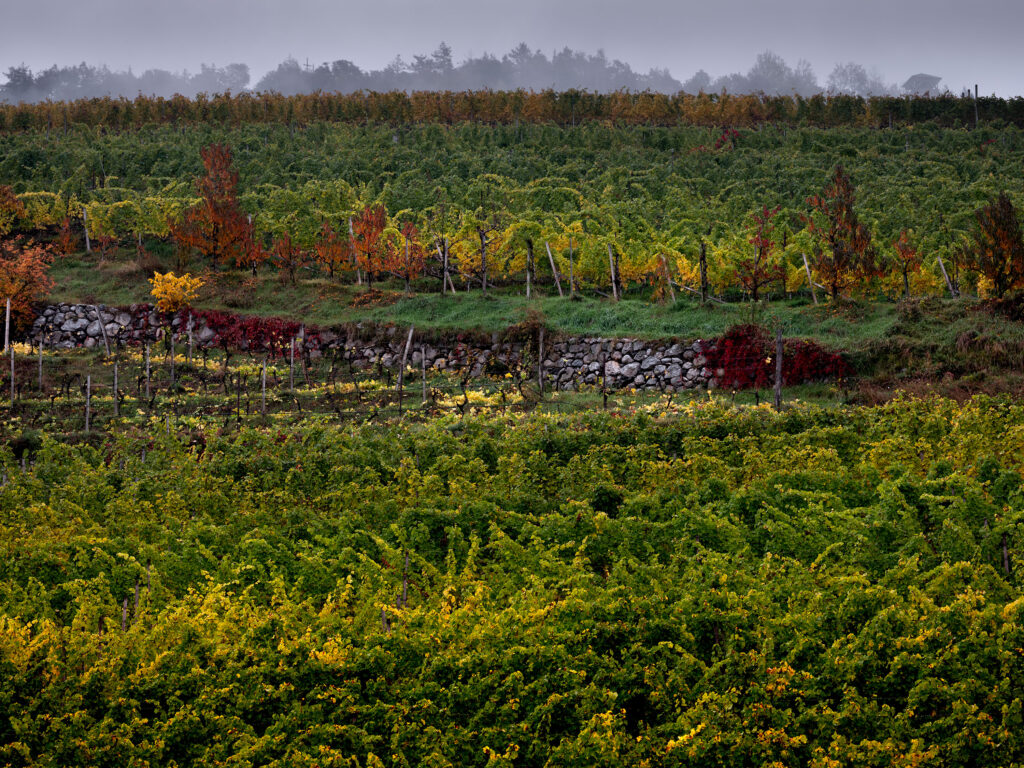
All of Nosssing’s wines are marked by extreme minerality, salinity and precision, though recently he has taken up the germanic wine craze of longer lees contact such that his wines have become more herbal and less fruity than they used to be. And while the extended lees contact certainly makes the wines richer and more complex in the long run, I miss the charming fruitiness they used toe xude fromt nhe get-go years ago (so nowadays I like Nossing’s wines more with a little age on them). Nossing has also stopped green harvesting and de-leafing in an effort to protect the grapes from the sun and avoid excessive sugar build-up and high alcohol by volume. All of Nossing’s wines are marked by noteworthy amounts of purity: he vinifies in stainless steel (his Veltliner partly spends time in neutral acacia barrels), keeps the wines eight months on the lees, and then bottles. Admittedly, his most famous wine is the Kerner (20,000 bottles), one of Italy’s two best, and truly a world class wine; Veltliner (10,000); Müller-Thurgau (7-10,000); Sylvaner (4000 bottles); and Riesling (2000-3000), while he stopped making Gewurz a while back. For a while, he was the president of Eisackthal Wein, an association that wants to spread the culture of the Valle Isarco; there are 40-50 members including producers, restaurants, and tourism office, and they deserve our support.
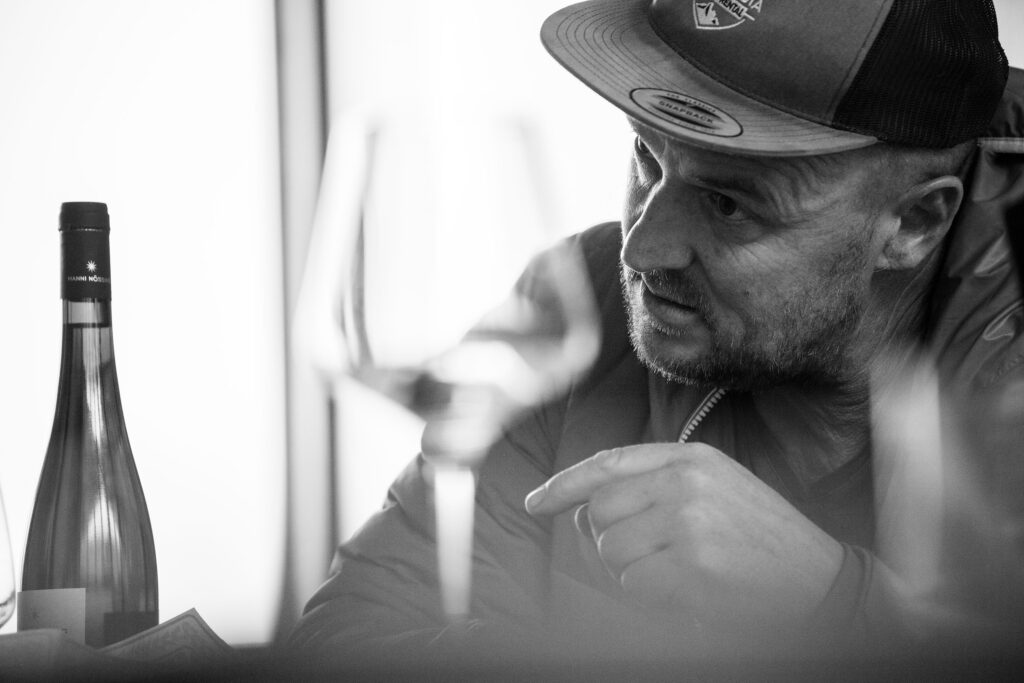
Nossing’s Sass Rigais is a simply exceptional Müller-Thurgau wine, that has always been a fantastic example of 100% Müller-Thurgau, though given the problems brought on by climate change Nossing told me he might begin adding small percentages of Riesling especially in hot years. Clearly, I am not surprised to hear him say so because with the increasingly hot weather, even at the high altitudes he farms at, the Müller-Thurgau becomes too ripe and has a tendency to then give flabby wines. In fact, Nossing picks his Müller-Thurgau at the end of September, but in reality he really wanted to pick in October for better ripeness and intensity of flavour, but he found that waiting so long means that the acidity dropped too much, and that’s even at the high altitude he farms at. The Sass Rigais is made from a one hectare of fifteen years old vines that grow at about 780 meters above sea level in the commune of Tiso where the Valle Funes begins and where there is a spectacular view of the Odle (Dolomites). Unfortunately, the old part of the vineyard that was twenty to twenty-five years old is no longer alive and was replanted. The soil has a little more clay than other parts of the Valle Isarco and Nossing likes this because he wants the Sass Rigais to be an ageworthy wine, and therefore to live longer than the one to two years that is the normal age span of most Müller-Thurgau wines. Based on my experience, in tasting this wine over the years (keep in mind I have had every single vintage numerous times and that I always, and I mean always, will get a bottle when I find it on restaurant wine lists; by the way, the same thing applies to his Sylvaner, another wine not to miss) I’d say Nossing has reached his goal: the Sass Rigais is lively yet concentrated and certainly ages well, as this vertical report attests.
The wines in this tasting
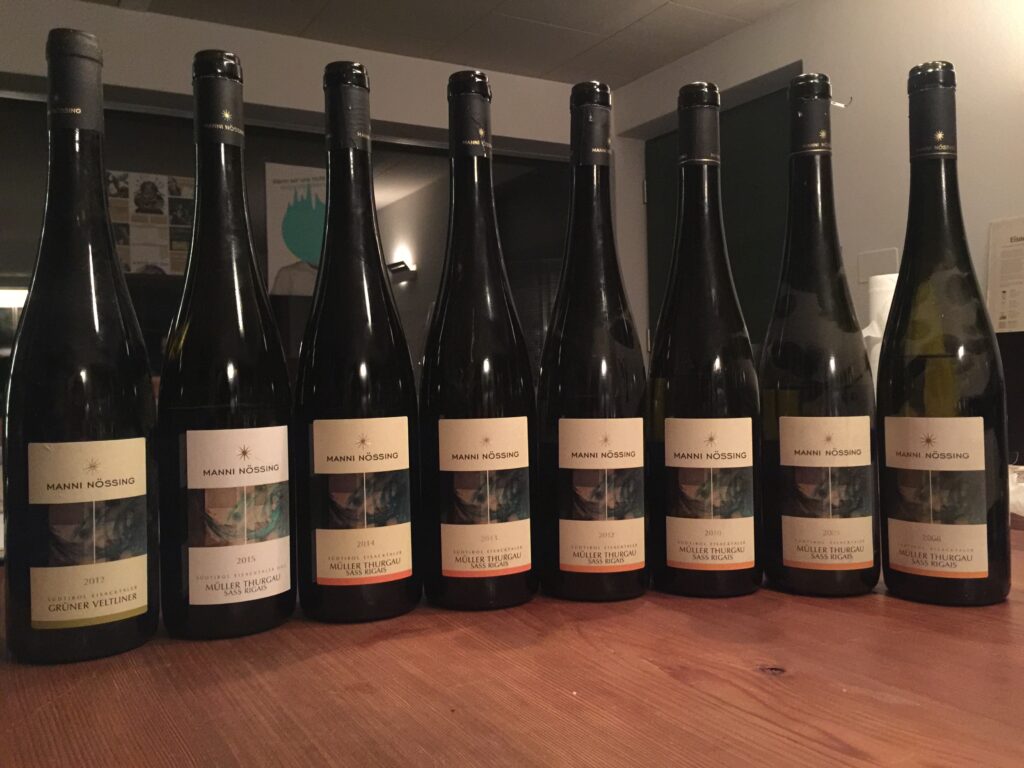
Manni Nossing 2019 Müller-Thurgau Sass Rigais Valle Isarco Alto Adige 93+
Pale silvery yellow-green. High-pitched, discreetly musky aromas of quinine, ginger, lavender, guava and crushed rocks. Very energetic, focused and classic in the mouth, this beauty leaves a tightly coiled impression on entry and in the middle, giving it a piercing quality and extending the crisp, pure flavours of green apple, white peach and guava on the clinging, clean, rising finish. A note of liquid minerality only increases this terrific wine classy disposition. Beautiful stuff. Drinking window: 2023-2030.
Manni Nossing 2018 Müller-Thurgau Sass Rigais Valle Isarco Alto Adige 94
Crystal-clear straw-green. Enticing aromas of lavender, gardenia, lemon verbena, chlorophyll, thyme, green apple and white peach. Juicy and lively in the mouth, with a pristine quality to its orchard fruit and more exotic flavours (hints of guava, star fruit and glazed kumquat) and very lively acidity that helps extend the flavours on the long, clean, mineral and scented back end. A wine of nuance and steely resolve, that whispers its charms rather than yell them for everyone to hear. In other words, a classy wine that conveys like words cannot just what is attainable with this long misunderstood grape variety. Brilliantly done here. Drinking window: now-2028.
Manni Nossing 2017 Müller-Thurgau Sass Rigais Valle Isarco Alto Adige 93
Luminous straw-green. Knockout aromas of passion fruit, bergamot, and tangerine, complicated by lime jelly, orange cordial and thyme, with a bubbly gummy nuance that always has me thinking of Kerner. Then lifted and pure, with harmonious acidity nicely framing the minty herbs, mineral green apple and lime flavours; an undertone of savory spices and liquid minerality adds further dimension and complexity to what is already a sneakily complex wine.The very long aftertaste is at once ripe and vibrant, hinting at anise and star fruit. Wonderful stuff, this is a beauty. Drinking window: now-2026
Manni Nossing 2016 Müller-Thurgau Sass Rigais Valle Isarco Alto Adige 92
Crystalline straw green. Exotically perfumed (guava, passionfruit, lychee) on the nose and like a jolt of cascading rock water in the mouth, this is a beautifully crisp, fresh easygoing white wine that goes down by the bucketful. Trouble is, if you do give in to your worst instincts (or is that the best?) then you’ll miss out on the noteworthy degree of complexity and concentration this Müller is endowed with. Perhaps not the longest wine ever made by Nossing, but this is just drop-dread gorgeous and irresistible. The 2016 vintage was an especially tough one because of peronospora, but an ace vignaiolo like Nossing handled it brilliantly. Drinking window: now-2023.
Manni Nossing 2015 Müller-Thurgau Sass Rigais Valle Isarco Alto Adige 94
Pale straw green. Passion fruit, lime, jasmine, coriander and spices. Dense, juicy and fresh, with penetrating flavours of quince, green apple and white peach. Long and juicy, with mineral and extremely pure nuances of stone fruit, nutmeg and passionfruit. Rather full-bodied for a Müller-Thurgau. This is just a smashingly good wine. Drinking window: now-2026.
Manni Nossing 2014 Müller-Thurgau Sass Rigais Valle Isarco Alto Adige 89
Pale straw-green. Aromatic nose offers apricot, clove, jasmine, and lemon verbena. Then bright, pure and penetrating with fresh flavors of lime and apple lifted by zingy acidity. Light bodied and fresh and just a tad dilute in the middle, but lovely racy dainty wine with a long spicy minty nuance. Drinking window: now-2023.
Manni Nossing 2013 Müller-Thurgau Sass Rigais Valle Isarco Alto Adige 88
Golden tinged yellow. Initially reduced nose hints at white peach, grapefruit and green mango, complicated by a hint of flint. Straightforward lemony zinginess and a strong saline note on the juicy long mineral finish that also hints at green apple and nutmeg. Drinking window: now-2024
Manni Nossing 2012 Müller-Thurgau Sass Rigais Valle Isarco Alto Adige 93
Green-tinged straw. Flowers, chamomile and nectarine on the crisp, fragrant nose. Bright and juicy, with honeyed nuances to the stone fruit and apple flavours that feature a nuance of flint. Long and smooth on the saline finish, where a hint of lychee emerges with aeration. Very balanced harmonious Müller-Thurgau of uncommon depth and complexity. Drinking window: now-2025
Manni Nossing 2010 Müller-Thurgau Sass Rigais Valle Isarco Alto Adige 94
Pale straw yellow. Complex aromas of nectarine, pear, sage and mint, complicated by hints of lemon verbena, honey and gin. Fresh and juicy, with very pure flavours of orchard fruit and mint that are multilayered and deep. Truly noteworthy complexity on the long precise finish, that repeats notes of honey and mint. Outstanding Müller-Thurgau that is also proving very ageworthy. Drinking window: now-2028.
Manni Nossing 2009 Müller-Thurgau Sass Rigais Valle Isarco Alto Adige 90
Pale golden yellow: very young looking considering this is now more than ten years old. Aromas and flavours of honey, pear, and sweet spices. Very smooth and round, with a honeyed nuance on the long, suave finish. Not the last word in complexity and won’t make old bones, but fairly irresistible right now. Drinking window: now (2022).
Manni Nossing 2008 Müller-Thurgau Sass Rigais Valle Isarco Alto Adige 94
Licorice, honey and beeswax complement dainty lavender, geranium, iris, pear, lychee, nutmeg and liquid mineral aromas and flavors. Boasts wonderful inner-mouth perfume, with hints of gardenia on the long bright finish. A wine of sneaky concentration and uncommon depth, this is a knockout Müller-Thurgau. The 2008 vintage was marred by a strong presence of peronospora so Nossing made less wine that year. Drinking window: now-2025.

 中文
中文
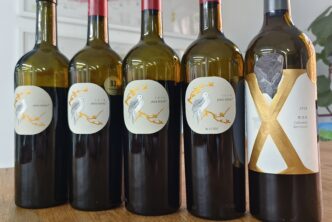
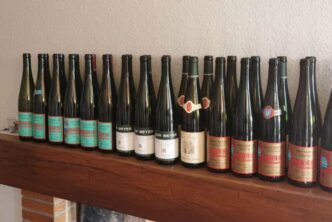
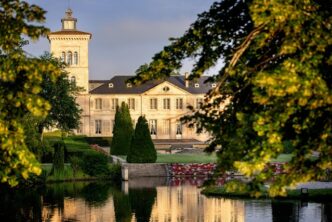
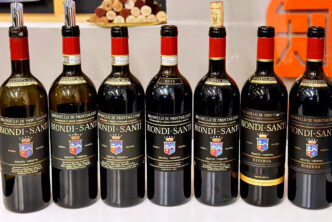
Ian: this is a wonderful article and the history of M-T is so well presented. The only other wines from this variety to engage me are from Franken. Well done, as always.
Paul, I’m really happy if you enjoyed the article….it’s always a source of never ending joy for me to have readers and fellow wine lovers like reading and learning about quality but less well-known varieties such as MT! Sure I’ll write about famous wines and verticals (Petrus, Cheval Blanc, Sassicaia, Costanti Brunello, Biondi-Santi Riserva Brunello plus a slew of Barolo and Barbaresco verticals and much more coming up) but I really enjoy it when people like to know more about MT and Sylvaner and lesser known Appellations such as Rully or Valle d’Aosta. By the way, if you enjoyed this article on MT, then maybe you’ll like the one on Sylvaner and the Kofererhof vertical where I also talk at length about that grape and will do so again next week when I shift the focus to Alsatian Sylvaner in the vertical of the delicious Mure’ Sylvaner Oscar (out next Wednesday).
Thanks so much for your support and BY THE WAY, may I ask a favour of you? please tell me which Franken MT wines you like, I’m really very interested for I will hunt them down and am actually planning a visit there soon to go to the wineries….for example, I like Horst Sauer, but I’m sure you have many more you like and know…which would you recommend? Thanks!